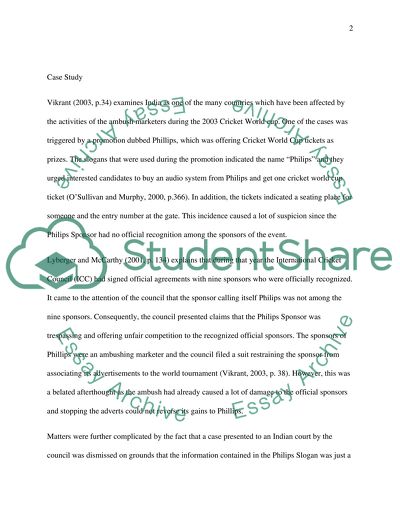Cite this document
(“How official sponsors have been affected by the activities of ambush Essay”, n.d.)
Retrieved from https://studentshare.org/marketing/1395976-how-official-sponsors-have-been-affected-by-the-activities-of-ambush
Retrieved from https://studentshare.org/marketing/1395976-how-official-sponsors-have-been-affected-by-the-activities-of-ambush
(How Official Sponsors Have Been Affected by the Activities of Ambush Essay)
https://studentshare.org/marketing/1395976-how-official-sponsors-have-been-affected-by-the-activities-of-ambush.
https://studentshare.org/marketing/1395976-how-official-sponsors-have-been-affected-by-the-activities-of-ambush.
“How Official Sponsors Have Been Affected by the Activities of Ambush Essay”, n.d. https://studentshare.org/marketing/1395976-how-official-sponsors-have-been-affected-by-the-activities-of-ambush.


